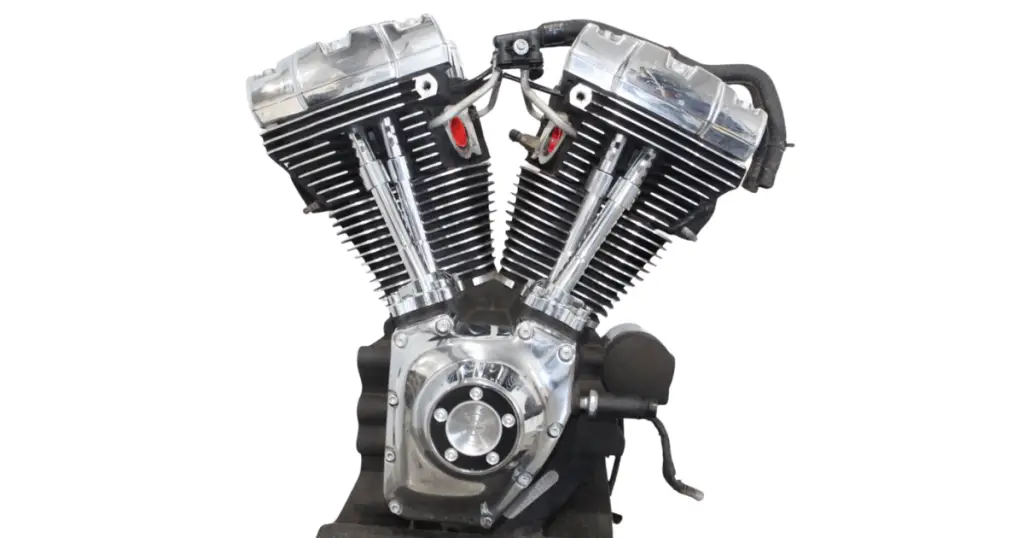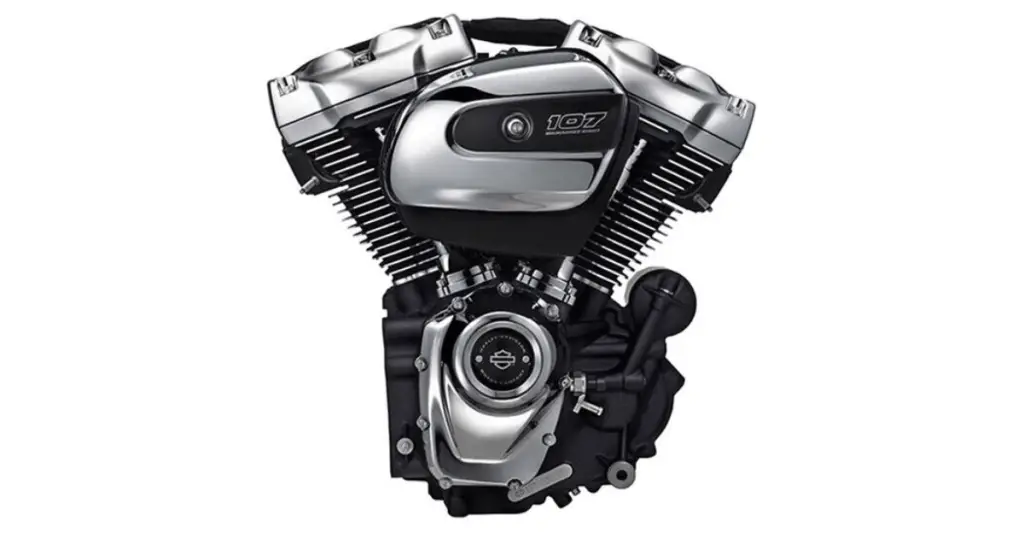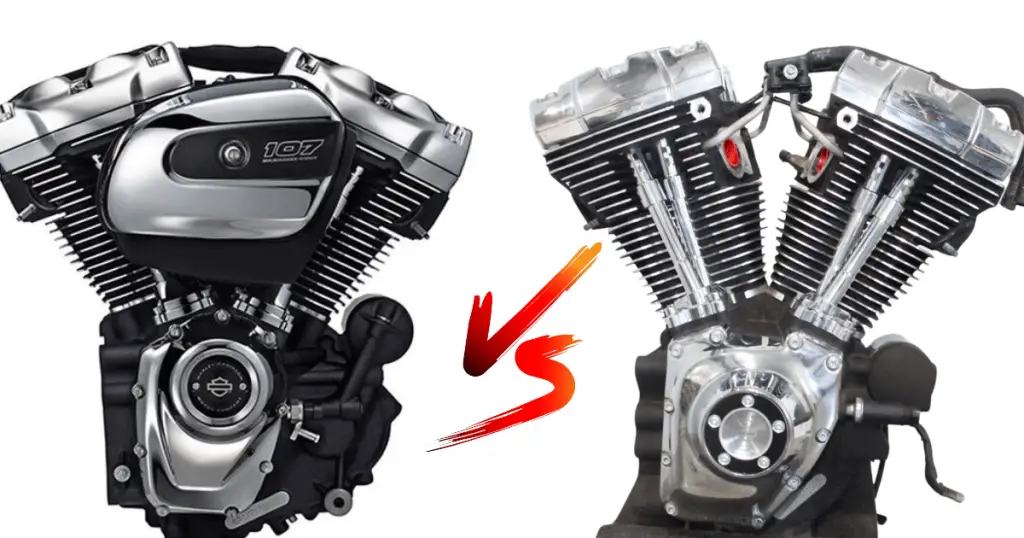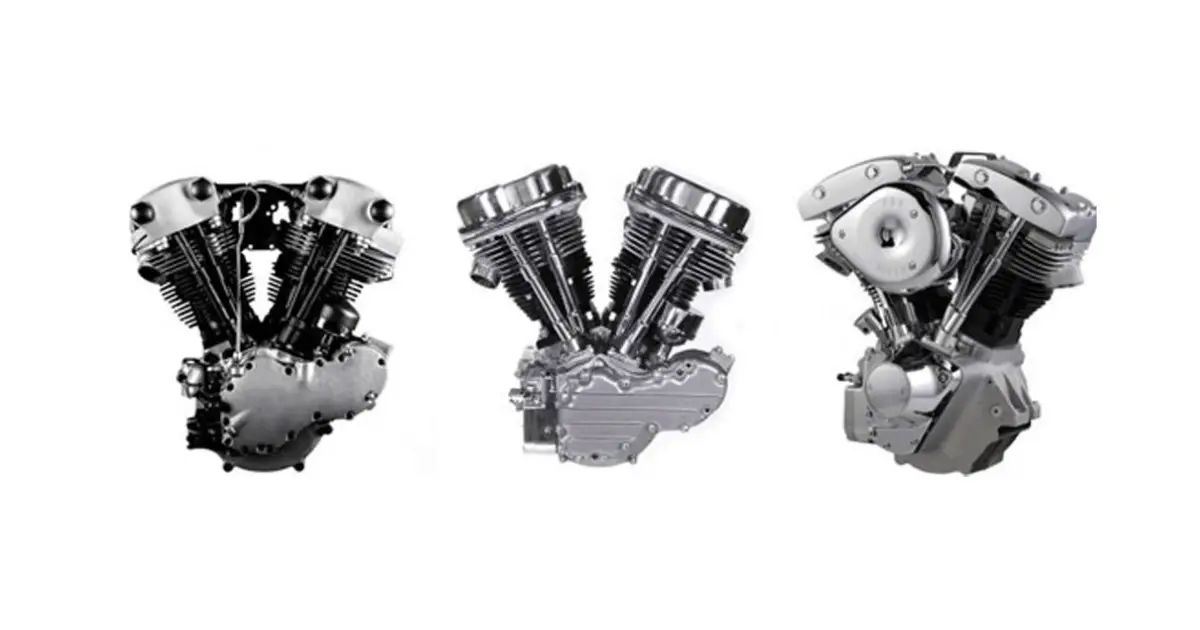Last Updated on January 9, 2024 by Pittalks
Imagine you’re cruising down the highway, wind in your face, the roar of an engine as your soundtrack. Now, the heart of that beast beneath you — the engine — is what gives your ride its soul. In the world of iconic Harley-Davidson motorcycles, the debate between the power and performance of the Harley 103 and the 107 engine is one that’s captured the attention of riders everywhere. Let’s throttle up and explore what sets these two mechanical marvels apart, giving you the inside track on horsepower, torque, and the unique feel of each engine as you dominate the open road.
Overview of Harley-Davidson Engine Evolution
The importance of engine evolution in Harley-Davidson’s history
You can truly appreciate the history of Harley-Davidson without diving into the heart of the bikes: the engines. The evolution of engines has been a defining part of Harley’s storied legacy, marking the company’s commitment to innovation and performance. From its earliest engines, each evolution has aimed to deliver that distinctive Harley-Davidson experience while catering to the changing needs and expectations of riders. Whether it’s about achieving more power, reliability, or efficiency, Harley-Davidson’s engine story is nothing short of legendary.
Understanding the timeline: From earlier engines to the 103 and 107 models
Your journey through Harley-Davidson’s engine timeline is a ride that begins with its humble origins in the early 1900s and progresses through to the robust and refined 103 and 107 engines. Earlier on, the company’s engines were simpler and smaller, built for the basic need for transportation. As the decades passed, the engines grew in size and complexity, reflecting the brand’s racing heritage and the American love for power and torque. The 103 and 107 engines are heirs to this legacy, now embodying the iconic Harley energy in the modern era.
Technological advancements and customer expectations
The strides in technology have always been accompanied by a rise in customer expectations. You’ve seen Harley-Davidson engines grow not just in raw specs, but in sophistication, too. Riders want bikes that pack more power, but also require less maintenance, offer better fuel economy, and conform to stricter environmental regulations. This pushes the beloved motorcycle manufacturer to constantly up the stakes, ensuring that with each new engine, your experience is nothing short of breathtaking.
The Harley 103 Engine

Development and introduction of the 103 engine
The Harley 103 engine, or Twin Cam 103, was developed to give you more oomph. It was first introduced in 1999 on select touring models, as a part of Harley’s ongoing efforts to meet the demands for higher displacement and more power. Over time, it became standard on most of their touring bikes, as well as some Softail models. With a focus on performance, this engine builds on its predecessors’ legacies with technological advancements to enhance your ride.
Key specifications and features
When you look under the hood—so to speak—of the 103 engine, you’ll find a 1690cc displacement V-Twin that breathes fire. Equipped with Electronic Sequential Port Fuel Injection (ESPFI), it’s not just powerful but efficient as well. It’s got that classic Harley feel with a modern touch, providing a reliable and responsive ride.
Performance characteristics
The 103 engine is a true performer, designed to deliver significant torque and acceleration compared to its predecessors. It’s tuned to give you that raw Harley-Davidson power feeling when you twist the throttle, ensuring your ride is both thrilling and smooth.
Common models equipped with the 103 engine
You can find the 103 engine on a range of beloved Harley models. It became a staple on touring bikes like the Road King and Street Glide, as well as Softail models such as the Softail Deluxe and the Fat Boy. The broad adoption of the 103 engine in these models signifies its successful marriage of tradition and modernity.
Read more here: Harley 103 Engine: Power and Problems Unveiled (Good Motor or No?)
The Harley 107 Engine

Development and introduction of the 107 engine
The 107 engine, or the Milwaukee-Eight, represents the next leap in the evolution of Harley-Davidson’s V-Twin legacy. Launched in 2016, this engine takes things up a notch with even more displacement and power. Designed for the future, it’s engineered to provide a smoother, cooler, and more efficient ride without losing the character you love about Harley engines.
Key specifications and features
A beast of an engine, the Milwaukee-Eight 107 features a displacement of 1745cc. It introduces a double counter-balancer setup to reduce engine vibration and improve rider comfort. As with the 103, you’ll find impeccable fuel injection, but there’s also the improved heat management and higher compression ratio—all ensuring that the engine works effortlessly, no matter the demand.
Performance characteristics
When you’re riding a Harley outfitted with the 107 engine, expect an enchanting experience. This engine is tuned for a peak performance that pushes forward the brand’s renowned torque and power. With a soul-satisfying pull and refined acceleration, the 107 takes it to the next level of engine performance.
Common models equipped with the 107 engine
Harley-Davidson’s Milwaukee-Eight 107 finds its home in an array of models. It was initially available in touring models such as the Road Glide and the Electra Glide. The Softail lineup, including the Breakout and the Heritage Classic, also got an upgrade with the 107. These models are for you if you’re after the cutting-edge performance of Harley’s latest engineering marvels.
Before we keep moving, here’s another comparison worth your while:
– Harley’s Twin Cam vs Evo: Who’s Really The King Here?
Comparative Analysis: Power and Torque

Horsepower ratings of the 103 vs. 107 engines
When you compare the horsepower ratings, it’s clear that the 107 engine edges out the 103. The increased displacement and mechanical enhancements give the 107 a higher power output, allowing it to push more ponies to the pavement. This translates to a more dynamic and responsive riding experience for you.
Torque output comparison
Torque is where the heart of Harley engines beats the loudest, and this is especially true with the 107. It trumps the 103 in the torque department with higher numbers, giving you that immediate power availability and grunt that Harley riders crave. More torque means improved pulling power and acceleration, making your journey a bit more effortless, especially when carrying passengers or gear.
Impact of power and torque on riding experience
The power and torque of these engines fundamentally shape your riding experience. With the 103, you’ve got ample power for most situations, but the 107 takes that muscular Harley sensation to new heights. You’ll feel it when you roll on the throttle—there’s a sense of limitless energy that escalates with the 107 engine, making every ride more thrilling.
Design and Build Differences
Construction materials and durability
Harley-Davidson doesn’t just aim for performance; durability is key as well. Both the 103 and 107 engines are built strong, with high-quality components and materials. But with the Milwaukee-Eight 107, Harley introduced lightweight pistons and other refined build materials, aimed at longevity and reducing mechanical stress.
Engine aesthetics and design philosophy
Both engines bear the unmistakable look of a Harley powerplant. However, your 107 engine also pulls off a more refined, sleek aesthetic, in line with its enhancements and forward-thinking design philosophy. It holds true to the classic Harley-Davidson lines and finishes, but with a contemporary twist that signifies its more advanced engineering.
Innovations in engine build between the two models
Innovation is not just about power; it’s about the entire build of the engine. With the Milwaukee-Eight 107, the introduction of four valves per cylinder and dual spark plugs per cylinder leads to better combustion and efficiency. These under-the-hood changes might not be visible, but you’ll notice them through improved ride quality and engine performance.
Diving deeper: Twin Cam vs Milwaukee 8: Who’s The Harley Engine King?
Fuel Efficiency and Economy
Comparing the fuel consumption
On the topic of fuel consumption, Harley-Davidson has made strides with the 107 engine. Despite the increase in displacement from the 103, the newer engine offers better fuel efficiency. This means more time riding and less time at the pump, courtesy of the enhanced engine internals and fuel management systems.
Efficiency technologies in 103 and 107 engines
Both the 103 and 107 come equipped with modern efficiency technologies like ESPFI, but the 107 benefits from a higher precision in fuel delivery and airflow management. The result is not only more power but also a more refined way of using fuel, which is great for both the environment and your wallet.
Cost implications for riders
When it comes to cost, fuel efficiency directly impacts your pocketbook. While you’re looking at a slightly higher initial investment for the newer 107 engine, you’ll likely make up the difference over time with fuel savings. Moreover, efficient engines tend to be less stressful on the environment, which might help you ride a moral highroad as well.
Lets dive deeper into another comparison: Twin Cam 88 vs 96: Which TC Is Really The King?
Aftermarket Upgrades and Customizations
Customization potential for each engine type
Harley-Davidson engines are known for their customization potential, and both the 103 and 107 are no exception. Aftermarket upgrades allow you to tweak your bike to your heart’s content, whether it’s for more power, sound, or style. The availability of performance and cosmetic aftermarkets for both engine types is extensive, so you can make your Harley truly your own.
Popular aftermarket upgrades for power and performance
You’re likely to see a plethora of options when it comes to aftermarket upgrades. Performance exhaust systems, air filters, and tuner kits are among the popular choices for both the 103 and 107 engines. These can give you a significant bump in performance and let your engine breathe better, sounding meaner in the process.
Impact of modifications on engine longevity and warranty
As you look at aftermarket options, keep in mind the potential impact on engine longevity and your Harley’s warranty. Some modifications can void warranties or affect the durability of your engine. You’ll want to choose reliable parts and possibly consult with a professional to ensure your upgrades enhance rather than compromise your ride.
Maintenance and Longevity
Maintenance requirements for the 103 and 107 engines
Maintaining your Harley’s engine is key to its longevity, and both the 103 and 107 have their specific needs. Generally, the 107 has been designed with maintenance in mind, offering easier access to components that require regular checks or changes. However, both will serve you well with regular oil changes, inspections, and adhering to Harley’s service intervals.
Durability and common issues
Durability is a hallmark of Harley-Davidson, and both engines are built to last. Yet, like any mechanical beast, they can have their quirks and issues. You may run into common problems like oil leaks or sensor failures. Staying on top of these through regular check-ups will ensure your engine remains in tip-top shape for the long haul.
Best practices for engine upkeep and longevity
Your best practices for engine maintenance include using high-quality lubricants, keeping it tuned, and avoiding riding habits that strain the engine unnecessarily. Keeping that beast cool, clean, and well-lubricated means you’ll enjoy a long life together, with countless miles of road ahead of you.
Rider Experience: Sound and Vibration
Sound profile of the 103 vs. 107 engines
The auditory experience of a Harley’s engine is nearly as important as the ride itself. While both the 103 and 107 boast that throaty, soul-stirring growl, the Milwaukee-Eight 107’s sound profile is a bit more refined, thanks to improved mechanicals and tuning. This doesn’t mean it’s any less a Harley; the rumble is as satisfying as ever, just with a modern finesse.
Vibration levels and rider comfort
Vibration is another sensory element that forms part of the Harley riding experience. The 107’s double counter-balancer significantly smooths out the engine’s vibration, enhancing rider comfort on long cruises. The 103 has its own charm with a ‘shakier’ feel, but it’s the 107 that will likely keep you feeling fresher over longer distances.
The Harley-Davidson signature rumble: preserving tradition vs. innovation
Harley-Davidson has balanced tradition and innovation beautifully with both engines. Although the Milwaukee-Eight 107 has been engineered for less vibration and a different sound signature, it still upholds the brand’s characteristic rumble. Preserving the Harley feel while advancing the technology is a tightrope that Harley has walked well, ensuring you continue to ride with pride, regardless of the engine beneath you.
Future Prospects and Advancements
Future developments in engine technology at Harley-Davidson
Your curiosity about what lies ahead for Harley-Davidson engine technology is well-founded. As the industry shifts toward environmentally sustainable practices, the company is likely to integrate more advanced technologies such as electronic fuel management systems and possibly hybrid or electric powertrains. Expect future engines to carry the Harley torch into new territories of performance, efficiency, and environmental friendliness.
What’s next after the 103 and 107 engines?
Although the 103 and 107 engines are still young in historical terms, the march of progress never stops. Harley-Davidson has already introduced even larger engines, such as the Milwaukee-Eight 114 and 117, and it’s exciting to speculate on how far they can push the envelope. As always, the demand for power, performance, and efficiency will shape the engines of the future.
Frequently Asked Questions
The primary differences are in displacement and power output. The 103 engine has a displacement of 1,690cc, while the 107 engine is 1,746cc. The 107 also typically offers more power and torque compared to the 103.
The Harley 107 engine generally offers better performance due to its larger displacement, resulting in more horsepower and torque. This translates to quicker acceleration and better handling of high-load situations.
Fuel efficiency can vary depending on riding conditions and maintenance, but generally, the 107 engine, with its advanced technology and efficiency, may offer slightly better fuel economy compared to the 103.
Both engines are known for their reliability, but the 107 engine benefits from newer technology and design improvements, potentially offering enhanced longevity and fewer mechanical issues over time.

